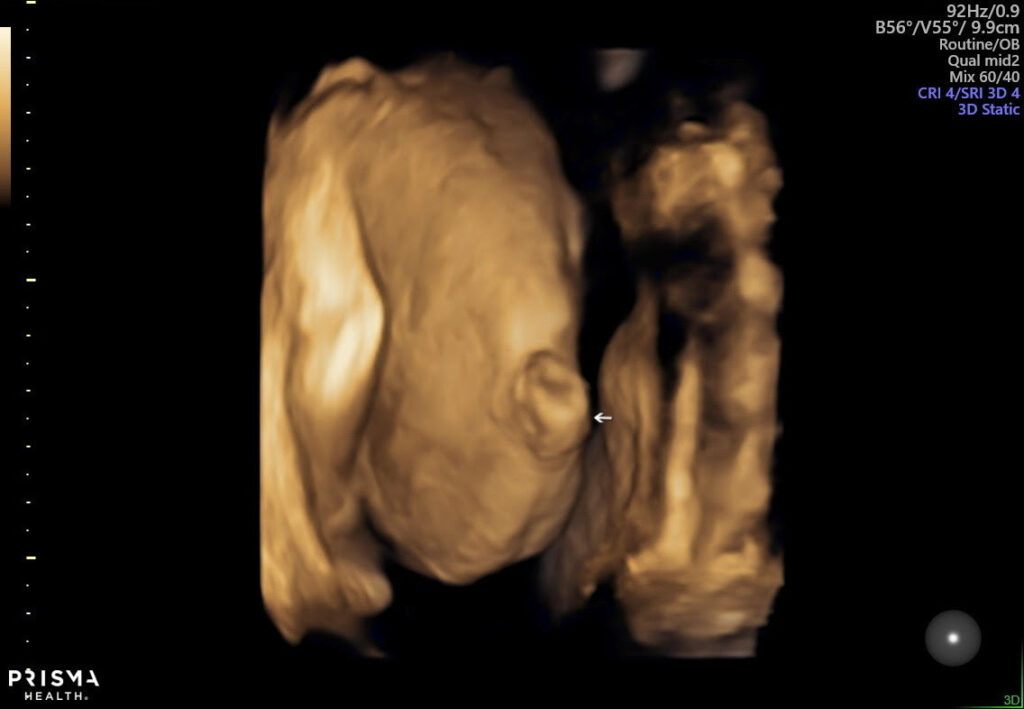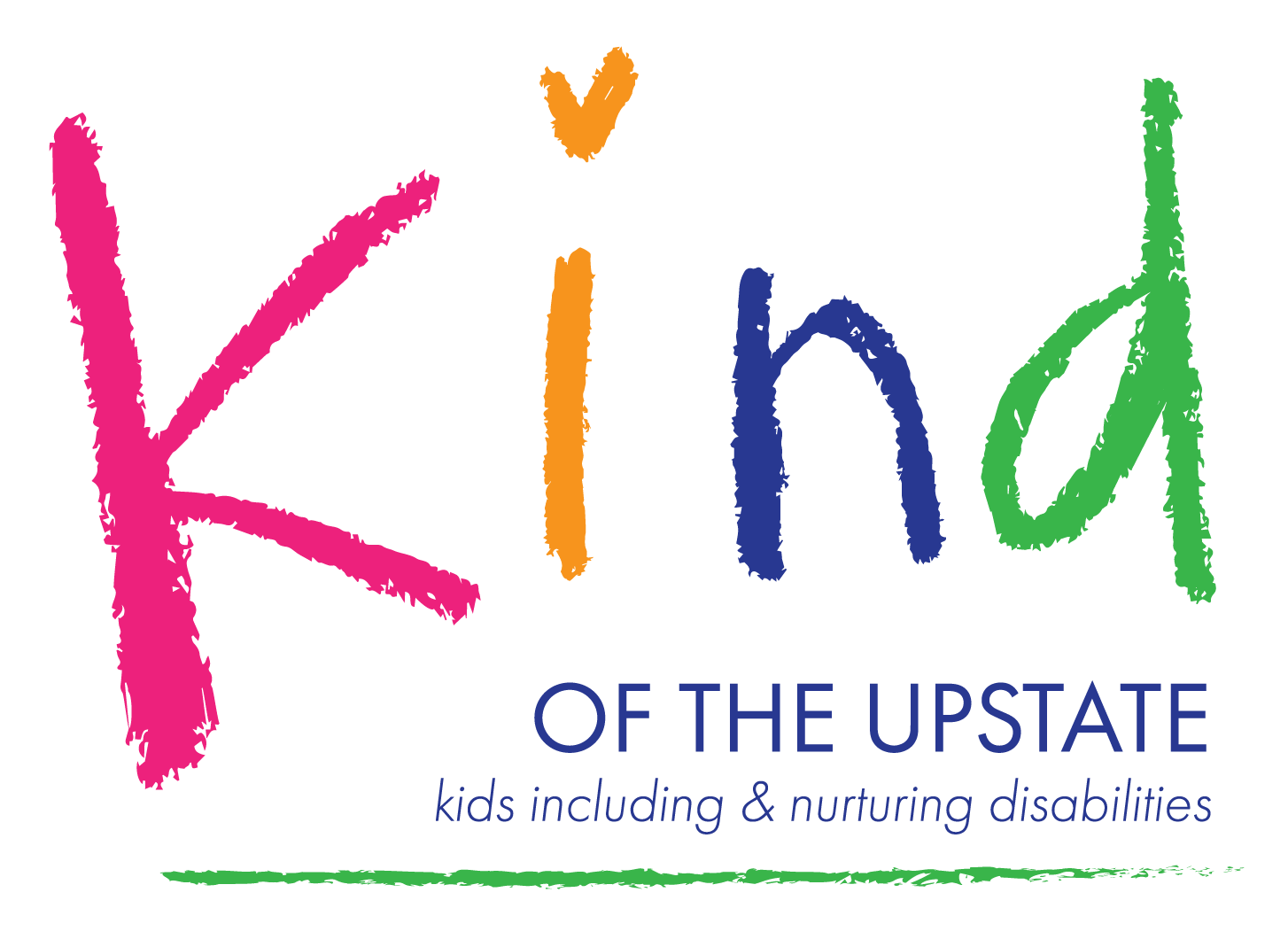Though Will, Hattie, and I live in Manning, SC and are not currently an upstate family, I appreciate Kind of the Upstate sharing our story. I grew up in Greenville and took for granted what a blessing it is to have places like the Meyer Center and Shriners Hospital (home to one of only two Spina Bifida clinics in South Carolina) in your own backyard. Raising a child with a disability in a small town can be extra scary since we don’t have the same developmental or emergency resources as the bigger cities in our state, but it’s also a blessing because it truly feels like the whole town is praying and looking out for your child in times of uncertainty.
One of those times was this past summer after our 20-week anatomy scan when we were told there was an abnormality and later learned that our daughter, Hattie, has Spina Bifida, a type of neural tube defect (NTD). There are several kinds of SB, and our daughter’s Myelomeningocele defect is one of the most severe yet common versions. Her spinal column did not completely close during the first 4 weeks of pregnancy, which formed a sack with a small opening on her back, allowing the amniotic fluid to damage her nerves. The lower the opening the fewer nerves that can be exposed to damage, so we are lucky that Hattie’s lesion is at L5, the lowest level of the lumbar section of the spine. Everything controlled above this lesion developed normally, and everything below it could have nerve damage.
Spina Bifida is often referred to as a “snowflake condition” because no two people diagnosed with it have the same experience. The most common challenges that people with Spina Bifida face are paralysis or reduced sensation in their lower body that prevents or causes difficulty walking, neurogenic bladder/bowel reducing their control of the functions, and hydrocephalus (excess fluid buildup on the brain) sometimes requiring a shunt. While severity of the disabilities can vastly differ, most people with SB are able to live rich and fulfilling lives, yet new parents are too often incorrectly told by doctors that their child will be a vegetable and encouraged to terminate the pregnancy. Heartbreakingly, over 60% of pregnancies that receive a Spina Bifida diagnosis are terminated, so our family wants to show just how happy and healthy these children can be and give hope to other families facing a similar diagnosis.
We were so fortunate to be referred to a fantastic Maternal Fetal Medicine (MFM) doctor in Columbia who shared our desire to seek a better outcome for our baby. We went to Texas Children’s Hospital in Houston and were deemed candidates for the fetoscopic Spina Bifida repair surgery offered there. At 24 weeks + 5 days, my tiny baby and I underwent an incredible surgery where the neurosurgeon closed her spinal opening through laparoscopic incisions in my uterus, which allowed her to continue to grow and heal in-utero for the remainder of pregnancy without any additional nerve damage. It is truly a miraculous surgery, and the surgeons who developed and perform it are angels on earth. We were able to return home to complete the pregnancy, and our beautiful daughter, Hattie, was born at full term just before Christmas, without any NICU time needed.
While there is no cure for Spina Bifida, one of the biggest benefits of Hattie’s fetal surgery was significantly reducing the likelihood that she would develop hydrocephalus, for which she will continue to be monitored but is unlikely to develop at this point! She thankfully fills a diaper just like other babies, and we will learn more when we reach potty training age. We can’t tell whether Hattie has much, if any, feeling from the ankles down since she can’t tell us yet, but she was born with bilateral clubfeet, which is a visual indication that there was at least some nerve damage done there. We are currently in the process of having her clubfeet corrected using the Ponseti method of casts and braces, and her doctors feel confident that Hattie will one day be able to walk at least short distances, probably with the assistance of braces and a walker at least to start out. Walking may be delayed, but it will be right on time with God’s plan whenever it happens!
At less than 3 months old, Hattie is currently hitting all of her early developmental milestones. In spite of her bright pink casts, it’s easy for us to forget she has a disability right now. We constantly try to balance being so proud of and amazed by our girl, knowing that she can pursue anything she wants in life, with preparing for possible physical limitations and challenges down the road. We want to continue to do everything we can (fetal surgery, early intervention, any and all available therapies, etc) to reduce the challenges she’ll face, yet we don’t want Hattie to ever feel that we’re trying to “fix” her. All of the unknowns of how this snowflake condition will affect Hattie’s life feel scary, but it also brings an element of normalcy since no parent knows exactly what challenges their child will face in the future. What we do trust and believe to be true is that God planned for Hattie to have Spina Bifida, and we feel called to share pieces of her journey with others. While I don’t ever want SB to define her, my hope for Hattie’s future is that she will be able to use her story to shed light on disabilities and the importance of learning about everyone’s differences. We’re all God’s children and He designed ALL of us to be unique!
*For any woman who may become pregnant, the best recommended dose of folic acid to prevent NTDs is now 4mg per day (10x the 400mcg dose found in most prenatal multivitamins) based on Greenwood Genetic Center’s extensive research over the last 30+ years. When GGC started it’s SC Birth Defects Prevention Program in 1991, South Carolina’s rate of NTD diagnoses was double the national average but has since leveled out thanks to the education and advocacy work they’ve done to promote folic acid supplementation. However, many doctors unfortunately still do not know or actively communicate this updated higher recommended dose of folic acid to patients, so it’s important to ask about a prescription for this higher dose option.*











Recent Comments